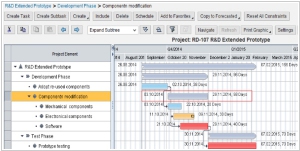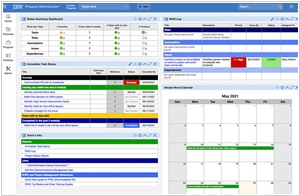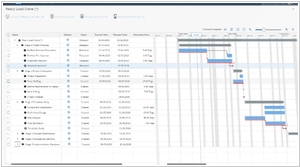IBM Program Work Center vs SAP EPPM
June 11, 2023 | Author: Adam Levine
IBM Program Work Center and SAP EPPM are enterprise project portfolio management (EPPM) solutions that help organizations effectively manage and control their projects. IBM Program Work Center offers a comprehensive set of features, including project planning, resource management, scheduling, cost tracking, and reporting. It integrates with other IBM software solutions, such as Maximo and Cognos, providing a seamless end-to-end project management experience. On the other hand, SAP EPPM is part of the broader SAP suite of products and offers similar functionalities, including project planning, portfolio management, resource allocation, and collaboration tools. It leverages SAP's extensive business management capabilities and integrates with other SAP modules, allowing organizations to align project execution with their overall business objectives.
See also: Top 10 Project Portfolio Management software
See also: Top 10 Project Portfolio Management software
IBM Program Work Center vs SAP EPPM in our news:
2014. SAP unveiles Portfolio and Project Management 6.1

SAP EPPM (Portfolio and Project Management) represents SAP's enterprise solution for supporting project planning and execution. The latest version of SAP Portfolio and Project Management addresses critical functional gaps identified by user groups while enhancing user experience and usability through non-disruptive improvements. It aims to further align project management and portfolio management. The updated features include the introduction of new portfolio item dashboards, which replace the previous ALV lists with new WebDynpro tables. These tables offer improved visualization, scrolling, filtering, dynamic column count (similar to Excel behavior), multi-language support, display of archived portfolio data, and the ability to search for archived portfolio objects. Usability enhancements are also incorporated. Additionally, the user interface for object links in Project Management is now unified with Portfolio Management, providing consistency across both areas.
2004. IBM buys PPM software maker Systemcorp
IBM has announced its acquisition of Systemcorp, a Canadian software vendor specializing in project portfolio management software designed to enhance companies' IT project management capabilities. Systemcorp's PMOffice suite, accessible through the web, combines document management and workflow tools with features for tracking project activities. This integration enables team members to collaborate effectively while providing reporting, monitoring, and cost analysis capabilities for project progress and performance. IBM emphasizes that the analytical data generated by Systemcorp's software equips companies with the necessary visibility to make informed decisions about technology investments and resource allocation. As part of the acquisition, IBM plans to integrate Systemcorp's operations into its Rational software development platform. The company expects the acquisition to be finalized within 30 days.
2002. IBM acquires Rational for $2.1B

IBM made a significant impact on the software and Web services development industry by acquiring Rational Software Corp. in a deal valued at $2.1 billion, marking the company's largest acquisition since purchasing Lotus Development Corp. in 1995. Rational offers a platform for software development tools catering to J2EE, .Net, Linux, and other environments. This acquisition positions IBM as the industry leader with the widest range of platform support and integrated development environments. In the past, IBM and Rational collaborated closely, integrating Rational's development methodologies and products into IBM's offerings. Notably, Rational also maintained strong relationships with Microsoft, adapting its Rational XDE life-cycle development platform to support both IBM's WebSphere and Microsoft's .Net platform. With this move, IBM strengthens its portfolio of software applications and management products through a robust tools division, aligning with the company's business On Demand strategy. Rational now joins Lotus, Tivoli, WebSphere, and DB2 as key components of IBM's software strategy.




